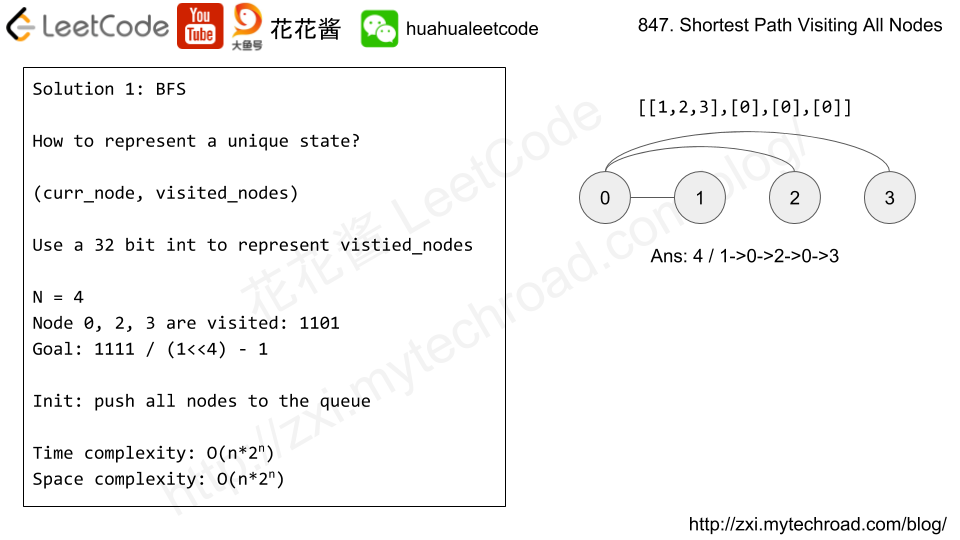Problem
Let’s call an array A a mountain if the following properties hold:
A.length >= 3- There exists some
0 < i < A.length - 1such thatA[0] < A[1] < ... A[i-1] < A[i] > A[i+1] > ... > A[A.length - 1]
Given an array that is definitely a mountain, return any i such that A[0] < A[1] < ... A[i-1] < A[i] > A[i+1] > ... > A[A.length - 1].
Example 1:
Input: [0,1,0] Output: 1
Example 2:
Input: [0,2,1,0] Output: 1
Note:
3 <= A.length <= 10000- 0 <= A[i] <= 10^6
- A is a mountain, as defined above.
Solution1: Liner Scan
Time complexity: O(n)
Space complexity: O(1)
C++
|
1 2 3 4 5 6 7 8 9 |
// Author: Huahua // Running time: 16 ms class Solution { public: int peakIndexInMountainArray(vector<int>& A) { for (int i = 1; i < A.size(); ++i) if (A[i] < A[i - 1]) return i - 1; } }; |
C++/STL
|
1 2 3 4 5 6 7 8 |
// Author: Huahua // Running time: 16 ms class Solution { public: int peakIndexInMountainArray(vector<int>& A) { return max_element(begin(A), end(A)) - begin(A); } }; |
Solution 2: Binary Search
Find the smallest l such that A[l] > A[l + 1].
Time complexity: O(logn)
Space complexity: O(1)
C++
|
1 2 3 4 5 6 7 8 9 10 11 12 13 14 15 16 17 |
// Author: Huahua // Running time: 18 ms class Solution { public: int peakIndexInMountainArray(vector<int>& A) { int l = 0; int r = A.size(); while (l < r) { int m = l + (r - l) / 2; if (A[m] > A[m + 1]) r = m; else l = m + 1; } return l; } }; |
Java
|
1 2 3 4 5 6 7 8 9 10 11 12 13 14 15 |
// Author: Huahua, 3 ms class Solution { public int peakIndexInMountainArray(int[] A) { int l = 0; int r = A.length; while (l < r) { int m = l + (r - l) / 2; if (A[m] > A[m + 1]) r = m; else l = m + 1; } return l; } } |
Python3
|
1 2 3 4 5 6 7 8 9 10 11 |
# Author: Huahua, 40 ms class Solution: def peakIndexInMountainArray(self, A): l, r = 0, len(A) while l < r: m = l + (r - l) // 2 if A[m] > A[m + 1]: r = m else: l = m + 1 return l |
